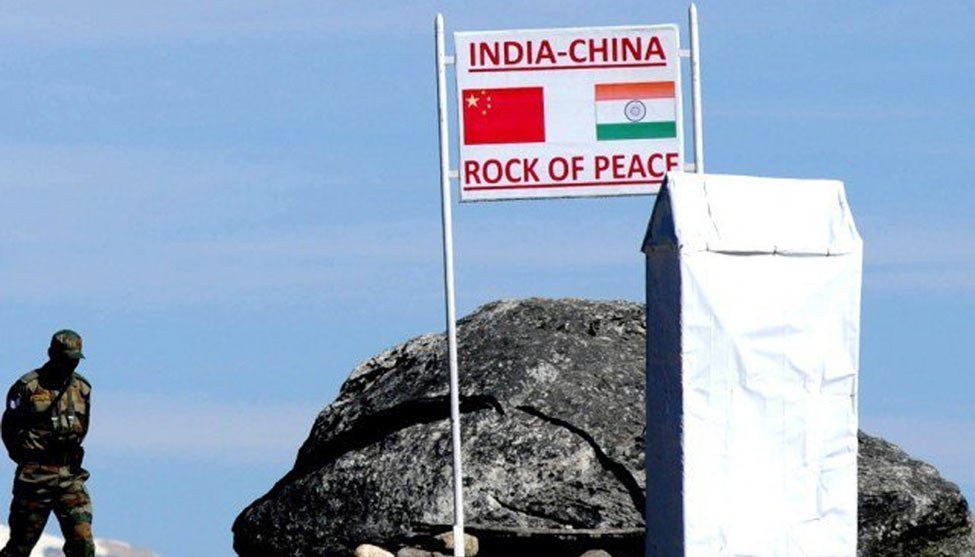Does the Doklim standoff between the Indian and Chinese armies have anything to do with the recent revamp of the Chinese military? There are only intelligent guesses being made in the South Block, but they know one thing for sure—if at all the balloon goes up, the decision as to where to strike, from Ladakh in the west to Arunachal in the east, will be taken by one Chinese commander. In the case of India, the decision will have to be taken after consultation among six men sitting hundreds of miles apart from one another.
Chinese president Xi Jinping has been revamping the PLA, and among the several changes that he has effected has been to divide China's territories and their frontiers into five integrated military theatres. Thus the old Lanzhou military district, whose commander was in charge of the Ladakh region, and the Chengdu district which was taking care of the rest of the frontier with India upto Arunachal, have all been brought under a new western theatre command. Even the air squadrons that are available in the region are at his beck and call. In other words, he commands everything that is lethal and moves on the ground or flies in the air, and can be pressed into service to strike at India.
In the case of India, the decision will have to be taken after consultation with and among six men. If India decides to strike at the frontier facing Ladakh, the northern army commander will be the one in charge. If we are to strike from the Uttarakhand frontier, the central army commander will take the call. If the strike is to be in the Arunachal sector, the eastern army commander will decide.
Xi Jinping announced a total revamp plan of the PLA on November 26, 2015 and, as the chairman of the Central Military Commission, has been personally supervising the revamp.
Chinese territory and frontiers had earlier been under seven military regions—Shenyang, Beijing, Jinan, Nanjing, Guangzhou, Chengdu, and Lanzhou. These have now been restructured into five—the Eastern, Southern, Western, Northern and the Central Commands. Zhao Zongqi, a full four-star general who had been commanding the Jinan region earlier, is currently the head of western command, under which the entire Indian frontier from Ladakh to Arunachal falls. Gen. Zhao, incidentally, had made an official visit to Pakistan and India last December and met not only the then Indian army chief Gen. Dalbir Singh Suhag, but also the present chief Gen Bipin Rawat who was then the vice-chief, and the eastern commander Lt-Gen. Praveen Bakshi.
Apparently, the western theatre which overlooks the Indian frontier, and the eastern theatre which is in charge of the South China Sea, will be the most active among China's new theatre commands, given the Chinese perception about the current live threats that exist in the regions. The India-facing western theatre is also geographically the largest among all the new five commands, and is the most trouble-prone—the troublespots of Tibet and Xinxiang fall under it. According to a paper by Maj-Gen B.K. Sharma and team of India's United Service Institution, “This will be probably more efficient from a Chinese perspective as they can have better synergy and orchestrate interplay between application of forces on our Western and Eastern sectors. This particularly is of relevance as the Chinese are strategically on interior lines. India on the other hand, has limited strategic synergy between its Western and Eastern Sectors, being on exterior lines.”
Gen Zhao Zongqui, the new western theatre commander, is an old Tibet hand, having served in Tibet as deputy chief of staff and chief of staff during 1984-2004, when large contingents of the PLA's rapid reaction forces were sent to quell riots in Tibet. “His stance on Tibet is unlikely to be soft,” observed the USI paper. Not only has he served in Tibet for nearly 20 years, but is also reputed to have combat experience. During the 1979 Sino-Vietnamese war, he is reported to have disguised as a Vietnamese peasant and wormed his way into Vietnam to gather intelligence.
Facing him on the Indian side will be three army commands, and their commanders, all of whom are three-star generals. In the west is the northern command, headed by a lieutenant-general sitting in Udhampur. His job is like that of Janus—facing the Pakistan front in Jamu and Kashmir, and the Chinese front in Ladakh. Then there are the central command and the eastern command, whose chiefs are based in Lucknow and Kolkata respectively. For air support, these gentlemen will have to seek the assistance of the western air commander sitting in Delhi, the northern air commander in Allahabad, and the eastern air commander in Shillong.
Several military thinkers and reformers, including the Kargil review committee headed by K. Subrahmaniam, have been urging the government to revamp the Indian military too on theatre command lines, but to no avail. An attempt was made to integrate the services at the headquarter level during the A.B. Vajpayee regime, but apart from creating a few star-studded posts there has been hardly any integration in actual planning or operational level.





